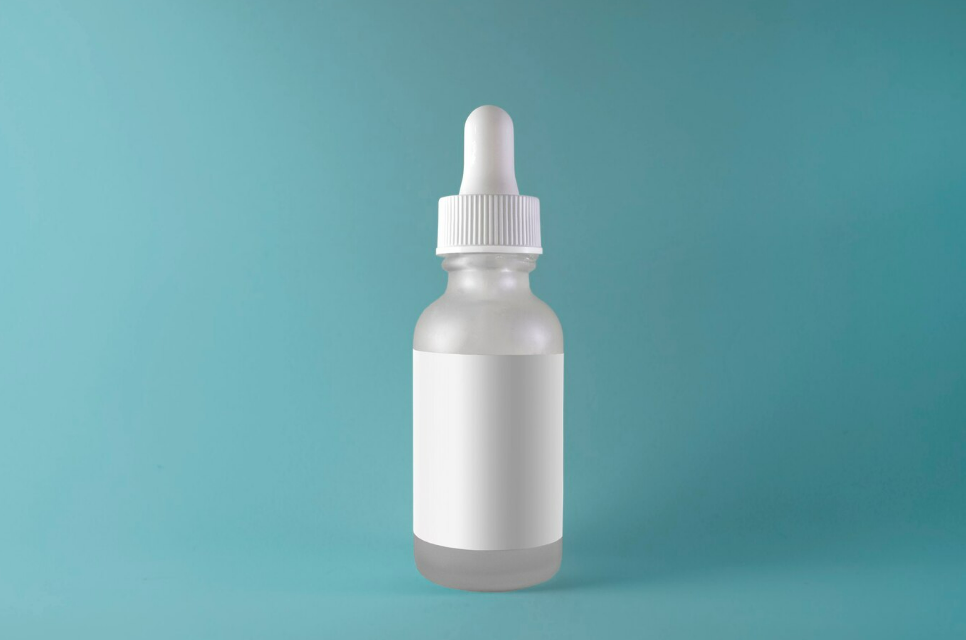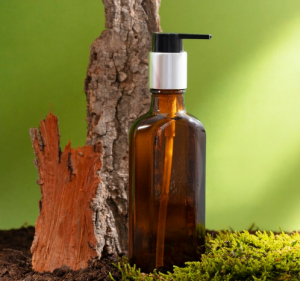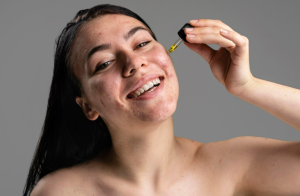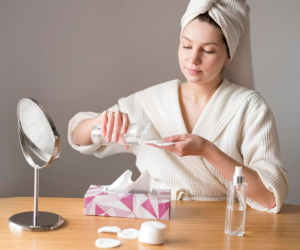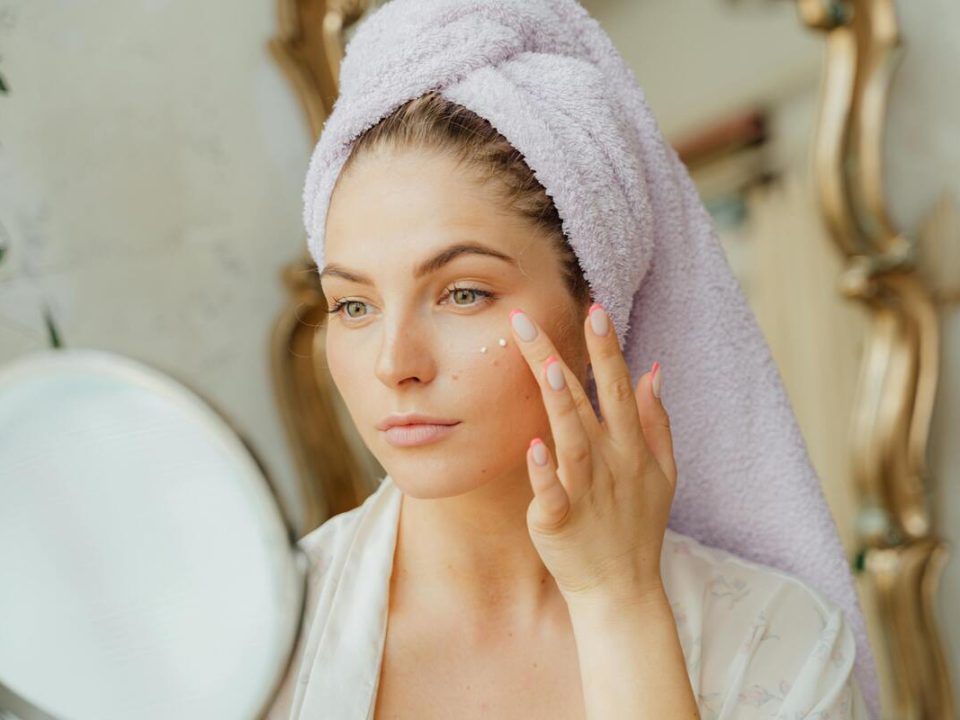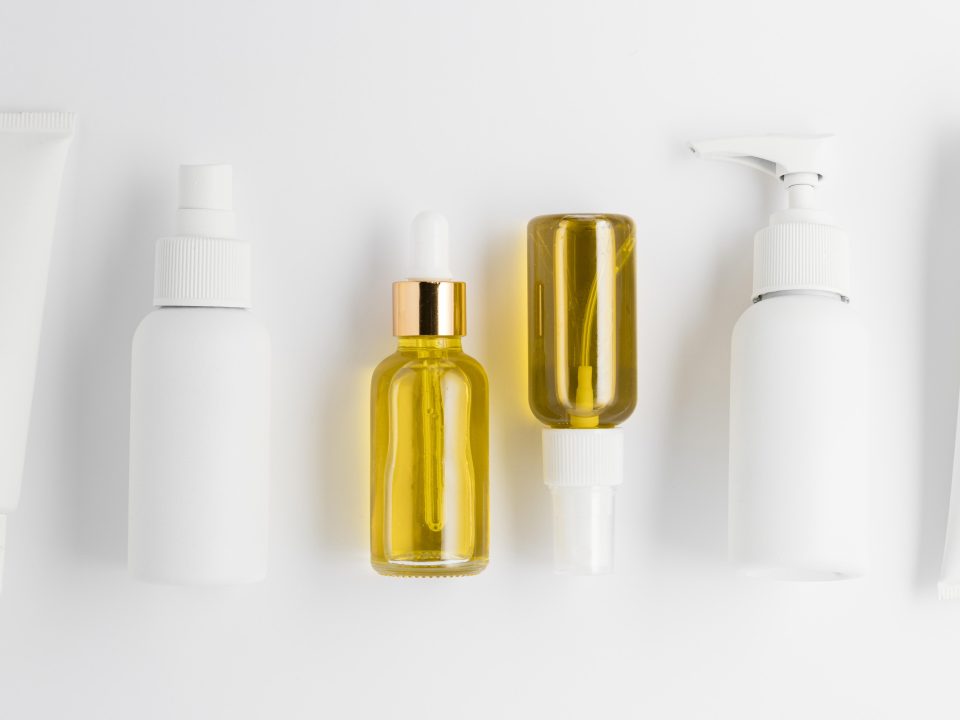
What Can I Pair With Glycolic Acid?
January 26, 2024
Does Salicylic Acid Remove Blackheads?
February 1, 2024Salicylic acid, a versatile wonder in the world of skincare, tackles a surprising range of issues. Whether you’re battling pesky pimples, navigating the bumpy terrain of psoriasis, or simply want to shed dead skin cells for a radiant glow, salicylic acid can be your secret weapon. Its main claim to fame lies in its ability to exfoliate, dissolve dead skin, and unclog pores, making it a potent tool for acne, warts, calluses, and more. But its powers extend beyond surface-level concerns, even helping manage inflammatory skin conditions like psoriasis and dandruff. Dive deeper into this blog to uncover the full spectrum of salicylic acid’s uses, its various forms, and how to harness its power for a healthier, clearer you.

Unmasking the Power of Salicylic Acid: From Willow Bark to Your Skin
Salicylic acid isn’t just a fancy name on your skincare label; it’s a powerful natural ingredient with a fascinating history. Its journey began centuries ago, nestled within the humble willow bark, where it played a crucial role in nature’s defense against pests and diseases. Today, its therapeutic potential has blossomed, finding its way into countless products, from face washes to foot scrubs, acne treatments to household cleaners.
But what makes salicylic acid so versatile? The secret lies in its unique chemical structure. It’s a beta-hydroxy acid (BHA), a type of acid that gently exfoliates the skin by dissolving the bonds that hold dead skin cells together. This “shedding” process not only reveals fresh, radiant skin beneath, but also tackles a range of skin concerns, from pesky pimples to stubborn calluses.
Forms and Formats: A Salicylic Acid Buffet
Salicylic acid isn’t a one-size-fits-all ingredient. It comes in a delightful buffet of forms and formats, each tailor-made for different needs. For a gentle exfoliation, you might choose a soothing face wash. For targeted acne treatment, a spot treatment or patch might be your weapon of choice. And for those stubborn calluses, a concentrated gel or ointment could be the key to unlocking smooth, touchable skin.
Safety First: A Gentle Giant with a Few Caveats
While generally safe and well-tolerated, even gentle giants like salicylic acid can have their quirks. It can be drying, especially for sensitive skin, and may cause irritation if used too aggressively. But fear not! With a little knowledge and some gentle TLC, you can harness the power of salicylic acid without triggering any unwanted drama.
Benefits and Drawbacks: A Balancing Act
Like any good story, salicylic acid’s journey has its ups and downs. On the bright side, it’s a champion at:
Combating acne: By unclogging pores and reducing inflammation, it sends those pesky pimples packing.
Exfoliating the skin: It buffs away dead cells, revealing a brighter, smoother complexion.
Reducing inflammation: Whether it’s acne, psoriasis, or dandruff, salicylic acid soothes and calms the skin.
Treating warts and calluses: It breaks down the excess keratin that builds up, leading to their gradual disappearance.
But, like any good story, there can be twists and turns:
Potential for dryness and irritation: This is especially true for sensitive skin types.
Sun sensitivity: Salicylic acid can make your skin more sensitive to the sun, so sunscreen is a must.
Interactions with other medications: If you’re on certain medications, it’s best to check with your doctor before using salicylic acid.

Acne: Unclogging Pores and Smoothing Skin with Salicylic Acid
Acne. Ugh, the dreaded word that plagues many of us at some point in our lives. But fear not, fellow breakout battlers! Salicylic acid stands as a potent weapon in our arsenal, ready to unclog pores, quell inflammation, and pave the way for smoother, clearer skin. Let’s delve deeper into how this wonder ingredient works its magic against acne.
Unclogging the Battlefield
Imagine pores as tiny doorways to your skin. When dead skin cells and sebum (oil) build up, they act like pesky doormats, blocking the entrance and trapping bacteria inside. This is where salicylic acid, a beta hydroxy acid (BHA), comes in. Unlike its alpha hydroxy acid (AHA) cousins that work on the skin’s surface, salicylic acid is oil-soluble, meaning it can penetrate deep into the pore and dissolve these blockages. It gently exfoliates, sloughing away dead skin cells and excess oil, preventing the formation of acne-causing comedones (blackheads and whiteheads). This unclogging action also allows other acne-fighting ingredients like benzoyl peroxide to penetrate deeper and work their magic.
Calming the Inflammation
Acne isn’t just about clogged pores; it’s also about inflammation. Those angry red bumps and pus-filled pimples are the result of an immune response to the trapped bacteria. Salicylic acid, like a wise peacemaker, steps in to reduce this inflammation. It works by inhibiting the production of inflammatory chemicals, calming the redness and swelling, and minimizing the appearance of existing blemishes. This anti-inflammatory action can also help prevent new pimples from forming, giving you a clearer complexion over time.
Smoothing the Way to Clearer Skin
But salicylic acid doesn’t just stop at unclogging and calming. It also promotes cell turnover, encouraging your skin to shed old, dull cells and make way for fresh, radiant ones. This smoother surface reflects light better, minimizing the appearance of acne scars and imperfections, and leaving you with a visibly brighter and more even-toned complexion.
Formulating Your Fight
Salicylic acid comes in a variety of over-the-counter and prescription strengths and formulations to cater to different acne types and sensitivities. For mild acne, cleansers, washes, and topical creams with 0.5% to 2% salicylic acid can be effective. If your acne is more moderate, consider products with higher concentrations (up to 5%) or targeted treatments like patches or spot gels. For severe acne, prescription-strength formulations may be necessary under the guidance of a dermatologist.
The Art of Incorporation
Remember, incorporating salicylic acid is a marathon, not a sprint. Start slowly, applying once or twice a day and gradually increasing frequency if your skin tolerates it well. Always test a new product on a small area first to watch for any potential irritation. Be gentle with your skin, as over-exfoliation can worsen dryness and irritation. Pair your salicylic acid hero with a hydrating moisturizer, especially if you experience dryness or peeling. And remember, sunscreen is your BFF, as salicylic acid can make your skin more sensitive to the sun.
Side Effects and the Enemy Within
While generally safe for most people, salicylic acid can cause some side effects like dryness, redness, and burning. If these occur, try reducing frequency or switching to a gentler formulation. In rare cases, allergic reactions can happen. If you experience severe irritation, stop using the product and consult a doctor. Also, be cautious if you’re on certain medications, as salicylic acid can interact with some drugs. Always check with your doctor before incorporating new products into your routine.
The Verdict
Salicylic acid is a powerful tool in the acne-fighting arsenal. Its ability to unclog pores, reduce inflammation, and promote cell turnover makes it a valuable ally for achieving a clearer, smoother complexion. However, remember to approach it with caution, use it wisely, and consult a doctor if needed. With the right approach, you can harness the power of salicylic acid to wage a successful war against acne and emerge victorious with a radiant, healthy glow.
Warts and Calluses: Salicylic Acid to the Rescue!
Warts and calluses, those pesky bumps and rough patches on our skin, can be irritating and unsightly. But don’t despair! Salicylic acid, a trusty over-the-counter hero, can come to the rescue. Let’s delve into how it works its magic on these unwanted growths.
Keratin: The Villain in Disguise:
Imagine your skin as a bustling city, and keratin is the building block of its houses – the skin cells. When this production goes into overdrive, like a construction boom gone wrong, excess keratin piles up, forming unsightly warts and calluses. Warts, caused by human papillomavirus (HPV), exhibit this keratin overproduction in a raised, often rough formation. Calluses, typically found on hands and feet, are more diffuse and caused by friction from repetitive pressure.
Salicylic Acid: The Demolition Crew
Now, enter salicylic acid. This nifty molecule acts like a wrecking crew for excess keratin. By gently loosening the bonds that hold keratin cells together, it encourages them to shed gradually, revealing smoother skin beneath. It’s like a controlled demolition, dismantling the unwanted keratin structures bit by bit.
Applying the Solution: A Battle Plan
To wage war on warts and calluses with salicylic acid, preparation is key. Here’s your battle plan:
Soak it up: Soften the target area by soaking it in warm water for 10-15 minutes. This allows the salicylic acid to penetrate deeper and work more effectively.
File (lightly!): Gently remove the top layer of dead skin with a pumice stone or emery board. Remember, be gentle – you don’t want to irritate the underlying tissue.
Target practice: Apply the salicylic acid product exactly as directed. Different formats like gels, liquids, patches, and plasters exist, each with specific application methods. Follow the instructions to the letter!
Bandage for protection: For warts, cover the treated area with a bandage to keep the medication in contact and protect it from scratching.
Repeat the routine: Depending on the product’s strength and your skin’s tolerance, you’ll need to repeat this process daily or every other day. Patience is key, as it may take several weeks for the wart or callus to disappear completely.
Strength in Numbers: Choosing the Right Weapon
Salicylic acid comes in various strengths, from a gentle 2% concentration for sensitive skin to a more potent 40% for stubborn warts. Choosing the right weapon depends on the severity of your problem and your skin type.
Mild warts and calluses: Start with a lower concentration (2-5%) and gradually increase if needed.
Common warts: 5-12% concentrations are the sweet spot for these common offenders.
Plantar warts (foot warts): These thicker warts require the heavy artillery – 15-40% salicylic acid formulations.
Remember, consult your doctor or dermatologist if you’re unsure about the best strength for your situation.
Beyond Salicylic Acid: Alternative Approaches
While salicylic acid is a champion in the fight against warts and calluses, other options are available:
Cryotherapy: Freezing the wart with liquid nitrogen destroys its tissue.
Electrocautery: Burning the wart with an electric current is another effective method.
Laser therapy: Precise laser beams target and destroy wart tissue.
These procedures are usually performed by a doctor and are preferred for large, persistent, or genital warts.
When to Call for Reinforcements: Seeking Medical Advice
Salicylic acid is generally safe for most people when used correctly. However, it’s always wise to consult a doctor if:
You have diabetes or poor circulation.
The wart or callus is inflamed, infected, or bleeding.
You experience severe irritation or allergic reactions to the product.
The wart or callus doesn’t improve after several weeks of treatment.
Psoriasis and Scalp Issues: Salicylic Acid to the Rescue
Psoriasis and dandruff, two pesky scalp conditions that leave you with flakes falling like snow and an itch that won’t quit. But fear not, salicylic acid comes to the rescue! This wonder ingredient tackles both these conditions in different ways, offering much-needed relief.
Unveiling the Scaling Slayer
Psoriasis and dandruff share a common foe: excess keratin buildup. Salicylic acid, with its keratolytic properties, is like a superhero against this villain. It gently exfoliates the scalp, loosening those dead skin cells and clearing the way for healthy new growth.
Inflammation, Be Gone:
Psoriasis also brings the unwelcome guest of inflammation, making your scalp feel like a volcano waiting to erupt. Salicylic acid, like a firefighter, comes in to douse the flames. It inhibits the production of inflammatory molecules, bringing down the redness and irritation.
Shampoo Showdown: Cleansing and Calming:
Salicylic acid shampoos are your first line of defense against scalp woes. These shampoos come in various strengths, typically ranging from 1% to 3%. Start with a lower concentration and gradually increase if needed, under the guidance of a dermatologist.
For those pesky patches that cling on, salicylic acid ointments and foams offer targeted relief. Apply them directly to the affected areas and leave them on for a specified time before rinsing. Remember, consistency is key! Use these treatments regularly to manage symptoms and prevent flare-ups.
Tag Team Tactics: Salicylic Acid and Friends
While salicylic acid is a valiant warrior, teamwork makes the dream work. Pairing it with other treatments can bring even greater relief.
Corticosteroids: These dampen inflammation for quick relief from itching and redness.
Coal tar: It slows down skin cell growth and reduces scaling.
Vitamin D analogs: They regulate skin cell growth and have anti-inflammatory properties.
Consult your dermatologist to find the best combination of treatments for your unique needs.
Safety First: A Patch of Wisdom
Before diving headfirst into salicylic acid treatments, a patch test is your knight in shining armor. Apply a small amount of the product to an inconspicuous area of your skin and wait 24-48 hours. If you experience any redness, itchiness, or burning, it’s a sign your skin isn’t a fan. Consult your doctor before proceeding.
Medication Mingle: A Heads-Up
Salicylic acid can interact with other medications, like blood thinners and certain diuretics. Always inform your doctor about all the medications you’re taking to avoid any unwanted side effects.
Embrace the Journey: Patience is Key
Remember, managing psoriasis and dandruff is a marathon, not a sprint. Don’t get discouraged if results aren’t immediate. Stick with your treatment plan, listen to your body, and adjust as needed with your doctor’s guidance.
Less Common Uses of Salicylic Acid: Beyond Acne and Warts
While salicylic acid shines in the spotlight for treating acne and warts, its versatility extends to other, less-familiar skin conditions. Let’s delve into three of these: seborrheic dermatitis, keratosis pilaris, and ichthyosis, exploring how the mighty BHA tackles these unique challenges.
Seborrheic Dermatitis: This inflammatory skin condition often manifests as red, scaly patches on the scalp, face, and chest. Salicylic acid’s keratolytic properties come to the rescue by gently exfoliating the built-up dead skin cells that contribute to the flaking and redness. Creams, lotions, and shampoos containing 1-2% salicylic acid can help remove the scales, reduce inflammation, and soothe irritation. However, as seborrheic dermatitis can sometimes be mistaken for other conditions like eczema, seeking a dermatologist’s diagnosis is crucial before self-treating.
Keratosis Pilaris: Commonly known as “chicken skin,” these tiny, rough bumps on the arms, legs, and buttocks arise from the buildup of keratin around hair follicles. Salicylic acid, in lower concentrations (0.5-1%), works wonders by unclogging these follicles and promoting healthy skin cell turnover. Lotions and washes containing salicylic acid, alongside regular gentle exfoliation, can help smooth the bumpy texture and minimize redness. While keratosis pilaris is a harmless condition, consulting a dermatologist can rule out other possibilities and ensure you’re using the right approach.
Ichthyosis: This group of genetic skin conditions causes dry, scaly, and often fish-like skin due to excessive keratin buildup. Salicylic acid, in higher concentrations (up to 5%) and often combined with other ingredients like urea or lactic acid, can help soften and remove the thick scales, providing temporary relief. However, due to the complex nature of ichthyosis, managing it requires a team approach with your dermatologist. They can prescribe appropriate topical treatments, moisturizers, and, in some cases, systemic medications to control the underlying condition.
Remember, while salicylic acid offers valuable benefits for these less common conditions, it’s essential to prioritize professional guidance. A dermatologist can accurately diagnose the specific type of skin issue you’re facing, recommend the most effective treatment combination, and monitor your progress for optimal results. Don’t hesitate to reach out for help if you experience any side effects or the condition worsens.
Beyond individual conditions, a common thread weaves through these uses: salicylic acid’s ability to exfoliate, reduce inflammation, and promote healthy skin cell turnover. This versatility positions it as a valuable weapon in our skin health arsenal, even if not always a frontline warrior. When used appropriately, it can play a supportive role in managing certain conditions and restoring our skin’s natural radiance.
Decoding the Salicylic Acid Maze: Choosing the Right Form for Your Needs
Salicylic acid, the mighty BHA (beta hydroxy acid), isn’t a one-size-fits-all solution. From acne-busting washes to wart-taming patches, it takes many forms, strengths, and delivery systems. Navigating this diverse landscape can be daunting, but worry not! This guide will equip you to unlock the full potential of salicylic acid, tailored to your specific needs.
Strength Matters
Low Dose (0.5% – 2%): Gentle enough for daily use, ideal for maintaining clear skin, tackling mild acne, and managing dandruff. Look for cleansers, toners, or light moisturizers with this concentration.
Medium Dose (2% – 5%): Targets persistent acne breakouts, stubborn blackheads, and mild keratosis pilaris. Suitable for spot treatments, serums, or occasional masks.
High Dose (5% – 12%): Reserved for tougher targets like thick calluses, warts, and severe psoriasis. Usually found in medicated pads, patches, or specialized treatment formulas.
Delivery System Decoded
Washes & Cleansers: Great for daily exfoliation, unclogging pores, and preventing ingrown hairs. Opt for gentle formulas if you have sensitive skin.
Serums & Toners: Deliver concentrated doses for targeted action. Layer with other skincare products depending on your skin type.
Lotions & Moisturizers: Provide sustained hydration alongside exfoliation. Choose oil-free options for acne-prone skin.
Patches & Gels: Ideal for localized treatment of warts, calluses, or corns. Offer controlled delivery and minimize side effects.
Masks & Exfoliators: Occasional deep-cleaning treatments for tackling congested pores and uneven texture. Use sparingly and avoid harsh formulas.
Skin Type Sensitivity
Oily & Acne-Prone: Benefit from oil-free, non-comedogenic formulas with low to medium dose salicylic acid. Look for ingredients like hyaluronic acid for soothing and hydration.
Dry & Sensitive: Choose gentle cleansers, serums, or moisturizers with lower concentrations and calming ingredients like niacinamide or aloe vera. Patch test and apply cautiously.
Mature: Focus on gentle exfoliation and hydration. Combine low-dose salicylic acid with antioxidants and retinol for improved cell turnover and wrinkle reduction.
Patch Testing: A Wise Precaution
Before you slather on that new salicylic acid formula, remember: patch test! Apply a small amount to your inner arm and wait 24-48 hours. Look for signs of irritation or redness before applying full-face.
Safety First
Always heed product instructions and avoid exceeding recommended use frequencies. Excessive application can lead to dryness, peeling, and sun sensitivity. Pregnant or breastfeeding individuals should consult a doctor before using salicylic acid.
Conclusion
Salicylic acid, the multi-talented molecule, has earned its place on the skincare stage for a reason. Its ability to shed dead skin cells, unclog pores, and tame inflammation makes it a hero for tackling acne, warts, psoriasis, and more. But like any hero, it has its kryptonite. Its potent punch can sometimes lead to dryness, irritation, and sun sensitivity.
Choosing the right form and strength is crucial to unlocking its benefits while minimizing side effects. For mild acne, over-the-counter cleansers and washes offer a gentle introduction. Deeper breakouts might require prescription-strength creams or targeted patches. Warts and calluses may require consistent application of concentrated patches or solution, while scalp woes might be soothed by a salicylic acid shampoo. Remember, patch testing is your new best friend – it helps avoid unwanted drama with your skin.
Consultation with a doctor or dermatologist is especially important for people with sensitive skin, pre-existing conditions, or concerns about dosage. They can tailor a treatment plan specific to your needs, ensuring you reap the rewards of salicylic acid without the sting.
However, don’t let the potential drawbacks overshadow the immense potential. Salicylic acid is a versatile warrior in the war against skin woes. It offers a safe and effective approach for many, often working hand-in-hand with other treatments to reveal a brighter, smoother complexion. Whether you’re battling blemishes, calming a psoriasis flare, or simply seeking smoother skin, salicylic acid deserves a place in your arsenal. Just remember, wield it wisely and with guidance, and it will unleash its magic, transforming your skin from rough draft to masterpiece.
So, embrace the power of salicylic acid, with its complexities and wonders. It’s more than just a pimple buster, it’s a gateway to healthier, happier skin. Just treat it with respect, listen to your skin, and you’ll unlock its true potential. The benefits? Skin that glows, confidence that radiates, and a newfound appreciation for this multifaceted molecule that’s been hiding in plain sight, waiting to reveal its beauty secrets.

